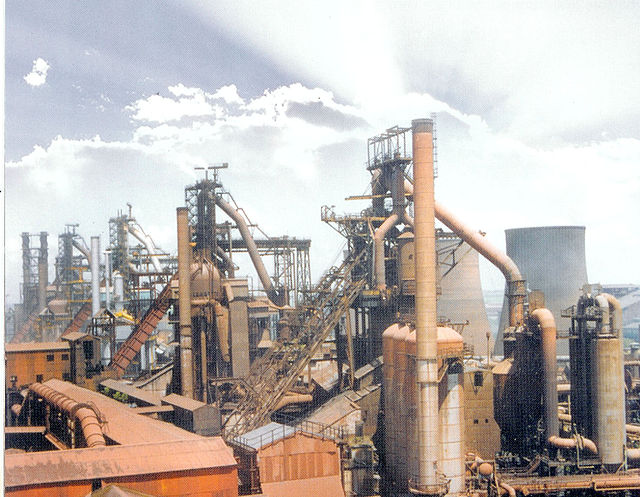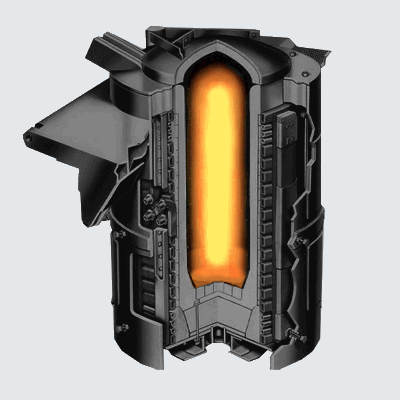Clearing the Air: The Importance of Air Pollution Control in Induction Furnaces

Introduction:
In the pursuit of industrial progress and economic growth, it is vital to balance technological advancements with environmental responsibility. Induction furnaces, known for their energy efficiency and precision in metal melting, have revolutionized the metal manufacturing industry. However, their operations can result in the emission of harmful pollutants that impact air quality and pose risks to human health and the environment.
In this post, we delve into the critical significance of air pollution control in induction furnaces. By exploring the pollutants generated during metal melting processes and the potential environmental consequences, we shed light on the urgent need for effective mitigation strategies. Join us as we examine the various air pollution control technologies and practices employed in induction furnaces, which not only ensure compliance with regulations but also uphold the commitment to sustainability and a cleaner future. Through responsible industrial practices, we can strike a balance between progress and environmental protection, forging a path toward a greener and healthier tomorrow.
Air pollution control equipment is of paramount importance in induction furnaces due to the potential environmental impacts associated with the melting and processing of metals. Induction furnaces emit various pollutants during their operation, and without adequate control measures, these emissions can harm both the environment and human health. The key reasons for the need of air pollution control equipment in induction furnaces are as follows:

- Particulate Matter (PM) Emissions: Induction furnaces produce fine particulate matter as a byproduct of metal melting. These particles can include dust, ash, and metal fumes, which, if released into the atmosphere, can cause respiratory problems and pose a health hazard to nearby communities.
- Volatile Organic Compounds (VOCs): Induction furnaces may release volatile organic compounds during metal melting, especially when using binders or coatings. Uncontrolled VOC emissions can contribute to the formation of ground-level ozone and smog, negatively impacting air quality.
- Hazardous Air Pollutants (HAPs): Certain metals and alloys used in induction furnaces may release hazardous air pollutants, such as heavy metals (e.g., lead, chromium, and nickel). HAPs are toxic and can have serious health effects, even at low concentrations.
- Carbon Monoxide (CO) and Nitrogen Oxides (NOx): Induction furnaces can produce carbon monoxide and nitrogen oxides as combustion byproducts, especially when using fossil fuels for heating. High levels of CO and NOx emissions contribute to air pollution, smog formation, and adverse health effects.
- Greenhouse Gas Emissions: Induction furnaces that rely on electricity from fossil fuel-based power plants indirectly contribute to greenhouse gas emissions. Although the induction process itself is energy-efficient, reducing emissions from the power generation source is crucial for overall sustainability.
To address these environmental concerns, various air pollution control equipment is installed in induction furnace systems:
- Baghouse Filters: Baghouse filters are used to capture particulate matter emitted during metal melting. The filters trap dust and metal fumes, preventing their release into the atmosphere.
- Scrubbers: Wet scrubbers are effective in removing VOCs and acidic gases from induction furnace exhaust gases. The scrubbers use a liquid medium to absorb pollutants before releasing clean air into the atmosphere.
- Catalytic Converters: Catalytic converters can reduce CO and NOx emissions by catalyzing the conversion of harmful gases into less harmful compounds.
- Emission Monitoring Systems: Real-time emission monitoring systems are used to track pollutant levels, ensuring compliance with environmental regulations and allowing for prompt corrective actions if necessary.
- Green Energy Sources: Some induction furnaces utilize electricity from renewable energy sources like solar or wind power, reducing their overall carbon footprint.
Implementing air pollution control equipment in induction furnaces is not only essential for regulatory compliance but also a responsible measure to protect the environment and promote sustainable industrial practices. By adopting these technologies and best practices, induction furnace operators can minimize their impact on air quality and contribute to a cleaner and healthier environment.







